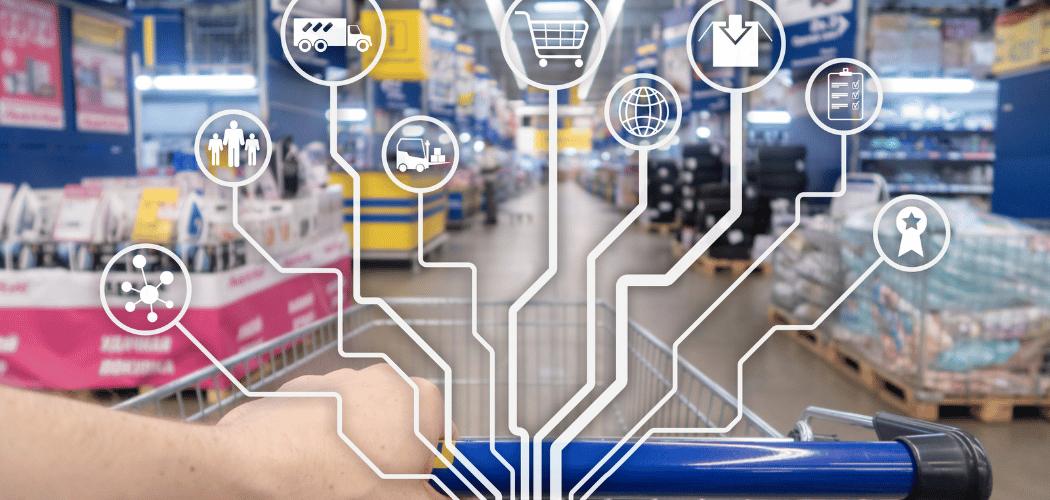Epsilon Loyalty Index UK reveals that winning hearts is the key to loyalty today
As UK consumers battle inflation, a cost-of-living crisis, and economic uncertainty, the need for brands to build loyalty with buyers is critical. And it’s what they want, with 72% indicating rising prices mean loyalty programs are more important than ever. But what constitutes loyalty today? Is it all about providing value, or is there something deeper? Well, the recently launched Epsilon Loyalty Index UK explores this – and there are some interesting findings.

Recognizing the aspects influencing loyalty
Loyalty is multifaceted, and to understand it, you must understand what influences it. Our research found that this boils down to three aspects: behavior, attitudes, and drivers.
Behavior is obvious, with people demonstrating loyalty by their willingness to spend on a brand. But we need to go further than financial commitment. Attitudes are critical to recognizing what’s happening in a consumer’s heart and mind. And finally, what drivers – those meaningful actions brands perform – endear a buyer to a brand? In essence, drivers influence attitude, and attitude drives behaviors.
This highlights how loyalty has changed. Traditionally, points were the bedrock of loyalty programs, but now it’s gone beyond this rational element. Developing authentic emotional connections with customers is critical, with loyalty now being derived from the entire experience someone has with a brand.
In today’s challenging economic climate, you’d be forgiven for thinking that price was the key consideration for buyers. Surprisingly, it’s not. Across all four categories the research covered – fashion, electronics and appliances, grocery retailing, and banking – Share of Heart was the key builder of behavioral loyalty.
For groceries, a sector with little differentiation, the assumption has been that store proximity to where someone lives influences where they shop. However, at 47%, this category saw the highest contribution of any for Share of Heart as an attitudinal loyalty builder. Even in electronics and appliances, where value for money is often top of mind, Share of Heart is critical.
This demonstrates the importance of trust and why people’s needs, values, and preferences must be recognized, understood, and acted upon to provide a personalized experience. For loyalty programs to work today, they must embrace this and jettison the traditional approach of rewarding customers in the same way.
Understanding loyalty’s four customer types
With the need to treat customers individually, the research discovered four distinct consumer types when it comes to loyalty.
- True Loyalists are emotionally loyal to one brand and, as a result, are strong advocates willing to pay more to experience the brand.
- Multi-Brand Loyalists are more fluid, and their loyalty is spread across several brands, which they are happy to switch between.
- Explorers have no emotional connection to a specific brand and are open to novelty and experiencing different ones.
- Transactionals seek out the best deals for themselves, opting for whichever brand offers them the best price or reward.
Each type is distinct, and by recognizing this, brands can adopt relevant approaches to influence and drive loyalty.
So, when it comes to loyalty, how does this look for each category? Well, let’s explore each of them.
Fashion
In this category, the number one loyalty accelerator is personalization. With style an individual choice, being personal in how you engage customers is critical to win them over. And winning them over is vital because fashion has the highest proportion of Explorers of the categories.
Online accounts for 61% of spend, rising to 66% for millennials, who are also big users of social shopping. This means having a great personalized experience online and offline is critical for success.
When it comes to loyalty programs, people want incentives alongside exclusive access to events and sales and having their loyalty recognized. But if you want to appeal to a younger audience, they relish experiences and feeling part of a community.
Electronics and appliances
Again, most purchases happen online. However, repeat store visits are a critical predictor of loyalty. And while a quarter of their customers are Transactionals, Share of Value as a predictor of loyalty came a lowly third to Share of Heart and Share of Mind, scoring the lowest across all categories.
Buyers look beyond price, and when it comes to loyalty programs, they prize value-added services. Delivering here can help brands engender loyalty and win in this space.
Not surprisingly, getting the fundamentals right, particularly around price, product, and service levels, is essential for this category. However, if you want to accelerate loyalty, encouraging customer participation and feedback and offering educational content to help people make the right buying decisions is key.
Grocery retailing
Even with a commodity offering, brand trust, buying experience, and meeting customer needs count a lot towards loyalty. Although there has been a big uptick in online buying, most spend still happens in-store, particularly larger ones. This highlights the importance of offering an enhanced, attractive, welcoming environment that delivers the enjoyable buying experience consumers want. Doing so helps create an emotional connection, which is key to encouraging repeat visits, an essential loyalty driver.
While incentives remain the most valued element of a grocery loyalty program, younger audiences are attracted more by content that helps them make informed decisions about what they eat, access to experiences, and a sense of belonging. To appeal to this younger group, grocery retailers must tie these aspects into their loyalty program.
Banking
Once influenced by who your parents banked with, this no longer rings true. 40% of younger audiences are opting for digital banking, while Explorers is the number one customer type in this category. Of all the categories, it also has the lowest percentage of True Loyalists by some margin.
Dealing with people’s money means getting the fundamentals right is essential. But, still, Share of Heart, especially concerning trust, is the major contributor to loyalty. However, Share of Value is the highest compared to the other categories. This acknowledges the desire for value. It also recognizes that inconvenience around switching does help foster behavioral loyalty.
When it comes to age, there’s a split around what people value in a loyalty program. With older groups, it’s cash back and customer service, while younger audiences want recognition, value-added services, and experiences.
Above all, the report highlights that today, loyalty is less about points and more about authentic connections so it must be approached as offering an experience, not just a program. Understanding and responding to customer needs while addressing their desire for education, participation, and recognition can pave new ways for loyalty. Take this into account, and you’ll create more value for your customers and engender greater loyalty.
To find out more about the changing nature of loyalty, the new insights the Epsilon Loyalty Index UK reveals, and which 40 brands were covered in the study, download your copy here.




